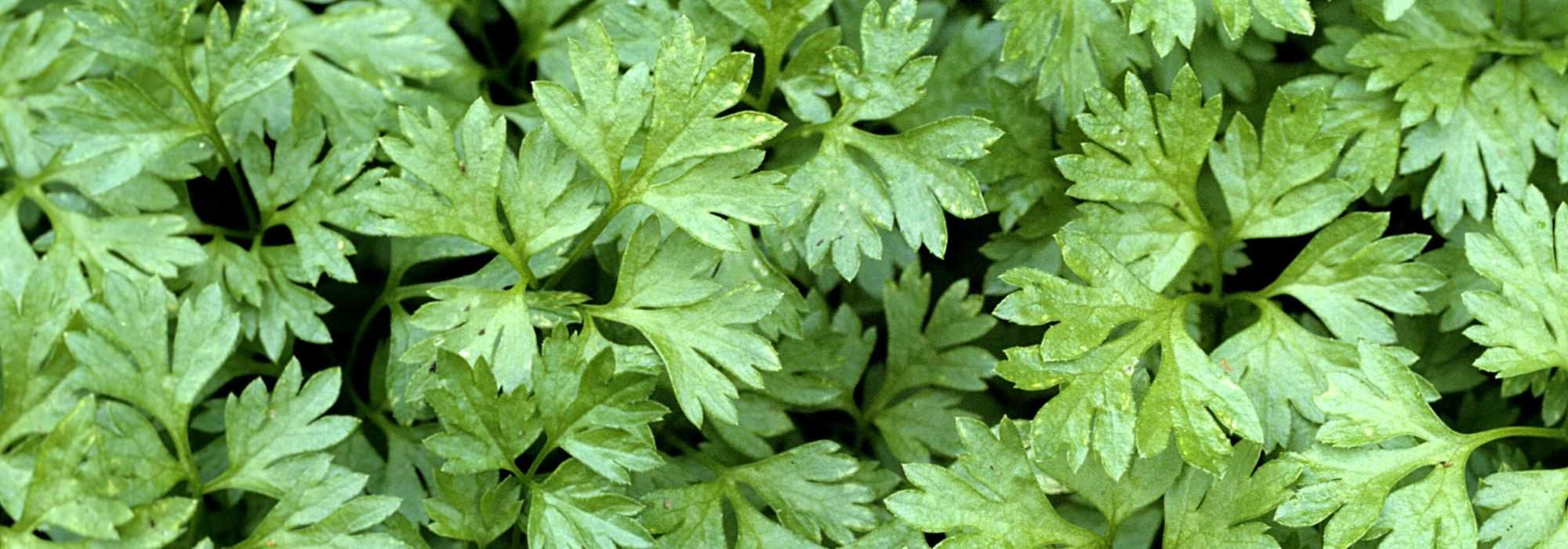
Chervil: sowing, cultivation, harvest
Contents
Chervil in a nutshell
- Chervil is a culinary, aromatic, and pot herb
- Its finely divided leaf has a pronounced fresh and aniseed fragrance
- In cooking, its fresh or dried leaves are used to flavour many recipes
- Easy to grow, it can be sown or planted in pots or in open ground
- Essential in the vegetable garden, it will also thrive in ornamental gardens in beds and borders
A word from our expert
Chervil is an aromatic plant cultivated since antiquity for both its culinary qualities and medicinal properties, particularly for soothing irritated skin.
Essential in the kitchen for its aniseed and refreshing flavour, its finely divided foliage resembling that of flat-leaf parsley enhances numerous recipes, especially soups, salads, herb chicken, fresh pasta, and omelettes.
The genus includes several perennial, annual, or biennial plants, among which the common chervil (Anthriscus cerefolium) is the most well-known, but also the musk or anise chervil and ancient vegetables to rediscover, such as the tuberous chervil. With a melliferous flowering in delicate umbels, chervils naturally find their place in the vegetable garden, in an herb garden, in pots on a balcony, or in borders within natural and wild gardens.
Easy to grow, it requires only regular watering, is sown in spring, and can be harvested until the frosts.
Here are all our tips on this aromatic plant that is as useful as it is decorative!
Description and Botany
Botanical data
- Latin name Anthriscus cerefolium, Chaerophyllum bulbosum, Myrrhis odorata
- Family Apiaceae
- Common name Chervil, Common chervil, Garden chervil, Medicinal chervil, Needle herb
- Flowering from May to August
- Height 0.30 to 1.20 m
- Exposure sun, partial shade
- Soil type rich and light
- Hardiness variable depending on species
The genus Chervil includes several perennial, annual, or biennial plants from the Apiaceae family (formerly known as Umbelliferae), such as Coriander and Dill. There isn’t just one but many chervils! They are cultivated either for their aromatic leaves or for their slightly sweet bulb. The genus Anthriscus comprises about 12 species. The most well-known is Common chervil (Anthriscus cerefolium), also known as garden chervil, medicinal chervil, and needle herb, which is grown as an annual herb. There is also its frisée variant, Frizzy Chervil, (Anthriscus cerefolium crispum). The Musk chervil (Myrrhis odorata) or Aniseed chervil is a perennial species. Common chervil should not be confused with Wood chervil (Anthriscus sylvestris), which also has edible foliage but can easily be mistaken for hemlock (Aethusa cynapium), a highly toxic plant.
Although it belongs to the same family, Tuberous chervil or Bulbous chervil (Chaerophyllum bulbosum), despite its name, is not a variety of chervil: it is a root vegetable, a garden plant whose tubers are consumed. Unlike its cousin, Common chervil, the leaves of Tuberous chervil are not eaten.
This aromatic plant originates from the edges of deciduous woods, wild meadows, and pastures in Central Europe, the Caucasus, and Turkey. It forms erect clumps that are taller than they are wide, with heights varying by species from 0.30 to 0.70 m for Common chervil up to 1.5 m for Aniseed chervil.
From its taproot emerge hollow, branching stems bearing deciduous foliage that is finely divided and medium to dark green. The very tender leaves, measuring 3 to 5 cm long, are flat, bi- or tripinnate, finely divided, and laciniate at the tips. Slightly villous and graceful, these long petioled leaves resemble those of flat-leaf parsley, coriander, or carrots. Musk chervil displays broad foliage of a beautiful green that resembles large, delicately cut fern leaves measuring 30 cm long. The foliage of chervil releases a pronounced anise scent when crushed.
Flowering occurs from May to August. As with all plants in the umbellifer family, it takes the form of hemispherical umbels. These small inflorescences consist of numerous small white flowers with long petioles and five petals, grouped in corymbs. Melliferous and fragrant, they attract the constant ballet of bees and butterflies.
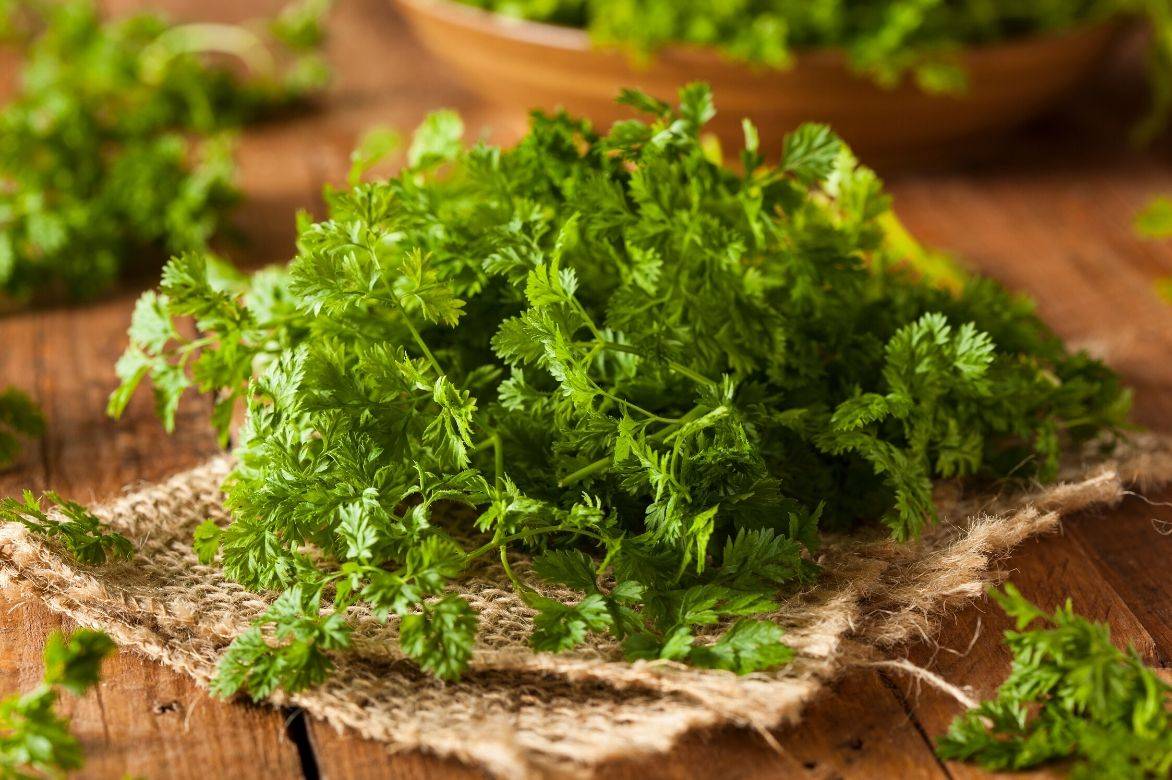
Bouquet of chervil
At the end of the season, they transform into dry fruits, long capsules containing shiny brown-black seeds that have a very refreshing anise flavour.
Not very hardy, Common chervil is grown as an annual plant in our gardens. However, it can persist by self-seeding. It is preferably grown in partial shade and enjoys cool, light soils that are fairly rich in humus.
All parts of chervil (stems, roots, leaves) have medicinal properties.
Read also
Create a spiralled herb garden.Main species and varieties
Alongside common chervil, there is frizzy chervil, a second variety that is slightly less fragrant and shorter. Both are annual species. There are also chervils that are vegetable plants, such as bulbous chervil.
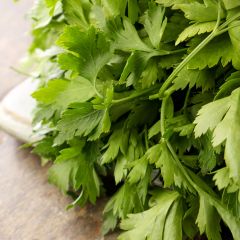
Common Chervil - Anthriscus cerefolium
- Flowering time August to October
- Height at maturity 50 cm
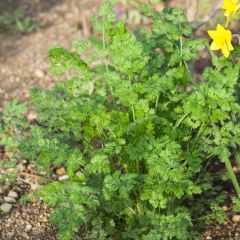
Curled Chervil - Anthriscus cerefolium
- Flowering time August to October
- Height at maturity 50 cm
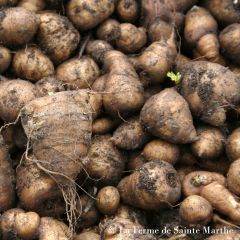
Organic tuberous chervil - 'Ferme de Sainte Marthe'
- Flowering time June to October
- Height at maturity 30 cm
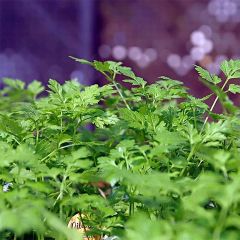
Chervil - French parsley
- Height at maturity 50 cm
Our chervils to plant
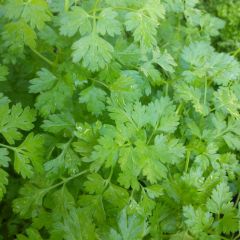
Common chervil in plants - Anthriscus cerefolium
- Height at maturity 50 cm
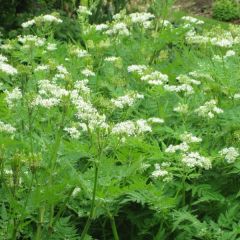
Myrrhis odorata
- Flowering time June, July
- Height at maturity 1,20 m
Discover other Chervil
View all →Available in 1 sizes
Available in 1 sizes
Available in 2 sizes
Available in 1 sizes
Available in 1 sizes
Available in 1 sizes
Available in 1 sizes
Available in 1 sizes
Available in 1 sizes
Available in 1 sizes
Planting and sowing
Where to Plant Chervil?
Not very hardy, Common Chervil tolerates temperatures around -5°C and is grown as an annual in our gardens, unlike Musk Chervil or Myrrhis odorata, which is a hardy perennial that can survive below -15°C and will reliably return year after year. Chervil is cultivated in open ground in the vegetable garden, in ornamental gardens, or in pots.
It prefers rather fertile, cool, light, well-drained soils, in a semi-shaded position. A situation that is too warm in summer causes quicker flowering and seed setting. It does not like heat. Ideally, it prefers a warm exposure in spring and a cooler one in summer. It accepts almost all types of soil except those that are too poor. It needs fertile soil, possibly even pure potting mix, and should remain cool.
It is essential in open ground, in the vegetable garden, in herb beds, but also in containers, pots, or window boxes on a windowsill, in a pocket balcony, or on a terrace. With its light silhouette, it will add a sense of airiness to borders or beds in natural gardens. Musk Chervil, being more substantial, is planted in herbaceous borders associated with summer-flowering perennials with strong growth.
When and How to Sow Chervil?
Sowing takes place in situ from March-April to September for a harvest 4 to 6 weeks later. For a winter harvest, sowing can be done under cover in autumn: stagger them to extend the harvest period, making a new sowing every 15 days or so.
Sowing Under Cover
Sow from October-November for a harvest 4 to 6 weeks after sowing. The tubers of Tuberous Chervil are harvested 6 months later.
- Sow thinly on a warm bed under a heated frame
- Cover with a little sifted potting mix
- Gently firm down
- Water thoroughly with a fine spray
- Thin out as soon as the plants have a few leaves
- Transplant to the garden in spring or into pots depending on the species
Sowing in Open Ground
The soil must be warm enough for germination.
- Sow thinly in a flat furrow 2 cm deep in rows spaced 20 cm apart (you can sow broadcast, but in this case, weeding and hoeing will be difficult)
- Cover the seeds with a little fine soil and firm down with the back of a rake
- Water with a fine spray and keep moist until germination, which takes about 8 to 12 days
- When the plants have 4 true leaves, thin to 10-15 cm apart in the row
Sowing in Pots
Common Chervil can also be sown directly in pots 20 to 40 cm in diameter or in window boxes.
- Spread a layer of clay balls at the bottom of the container
- In potting mix, bury two to three seeds at ½ cm deep
- Water regularly
- Thin out to keep only 2 to 3 plants per container
All our tips for successfully sowing aromatic plants are on our blog!
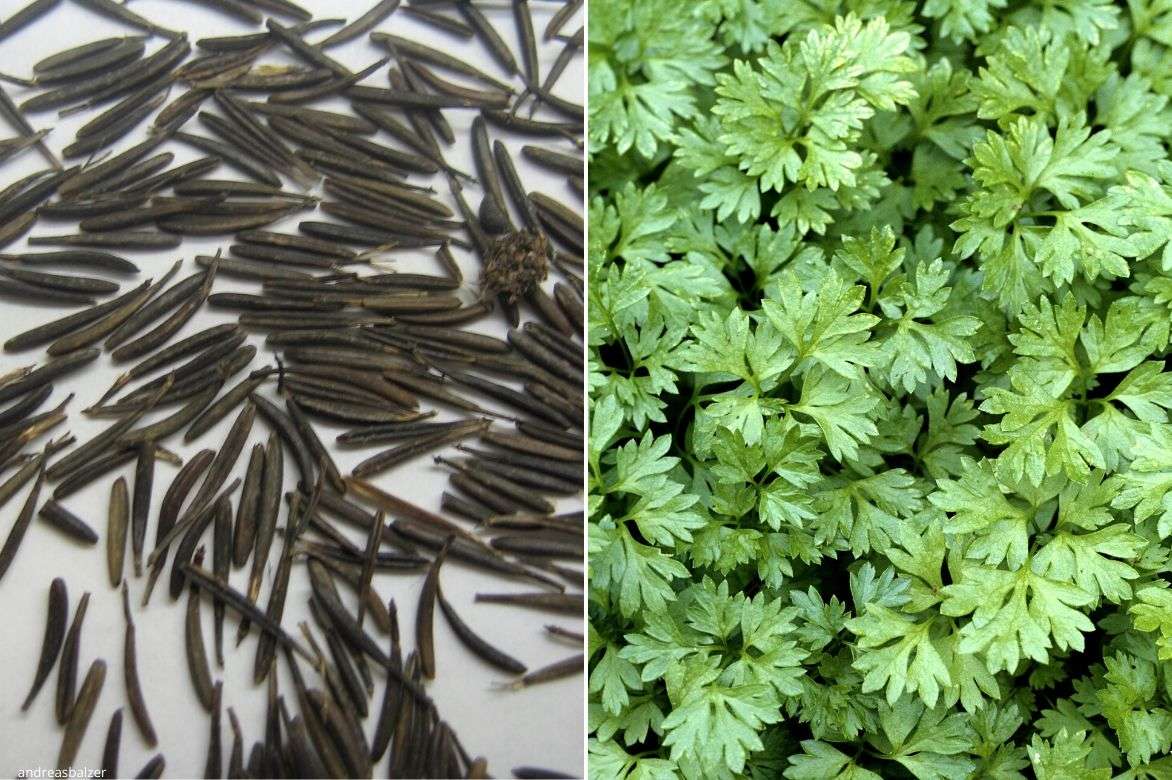
Seeds and young leaves of Common Chervil
Read also
Sowing of aromatic plantsWhen and how to plant chervil?
You can also choose our young plants of Chervil! Plant them in spring or summer from March to August and harvest from April to October according to the sowing.
In open ground
Space the young plants about 30 cm apart.
- Dig a hole three times the volume of the root ball
- Spread gravel at the bottom of the planting hole
- Add compost to the bottom of the hole
- Place the root ball and cover with enriched garden soil mixed with a bit of sand
- Firm down
- Water to keep the soil moist
In a pot
Use a pot of at least 30 cm in diameter for 2 to 3 young plants of Chervil.
- Spread clay balls or gravel at the bottom of the drainage hole to facilitate drainage
- Fill the pot with a mixture of 1/3 potting soil, 1/3 sand, and 1/3 garden soil
- Place the root ball and fill in with the mixture
- Firm down and water as soon as the soil is dry
→ Learn more with our advice sheet: Growing chervil in a pot
Harvest, storage, and use
Harvesting Leaves:
Fresh chervil leaves are harvested from April to October, as needed. Simply cut the stems at ground level with a pair of scissors. New leaves will form as you harvest. The leaves are more flavourful before flowering.
Harvesting Tubers:
Tubers are harvested in July: pull them up and let them dry on the ground after cutting the leaves.
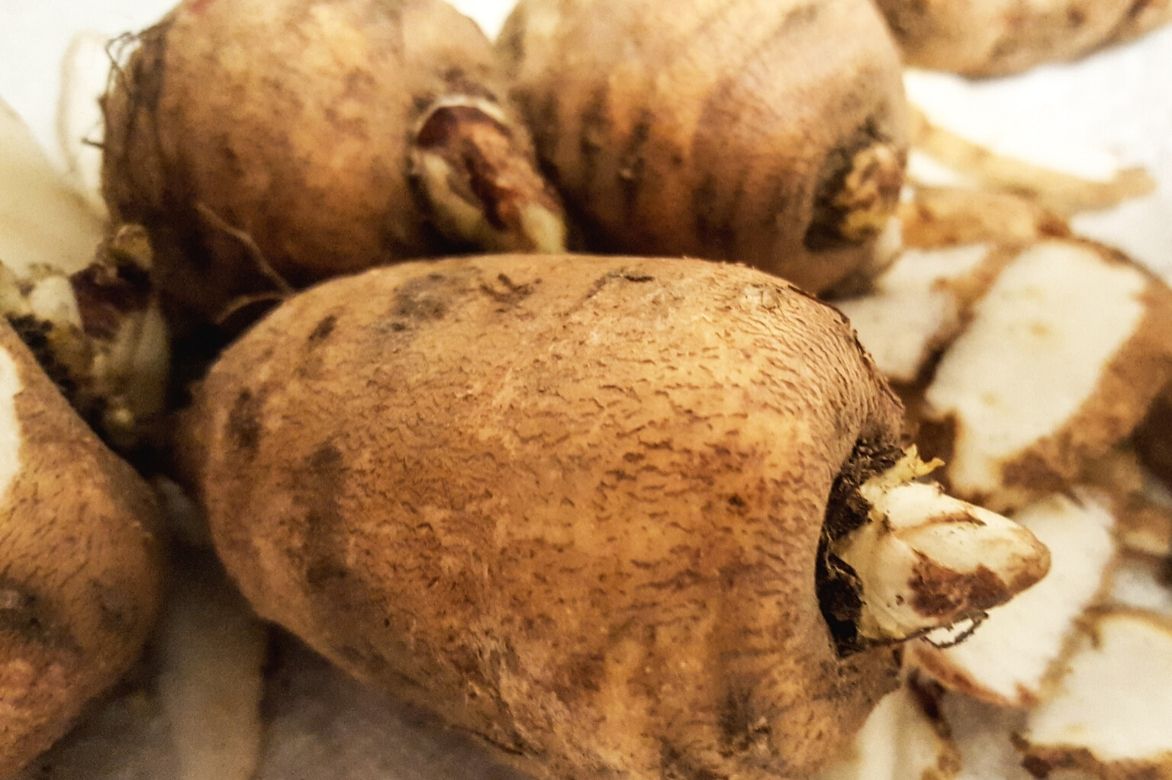
Harvesting tubers of tuberous chervil
Storage:
Chervil stems with leaves are best consumed fresh and quickly, as they retain their full aroma. They can be stored for a few days in the refrigerator wrapped in damp absorbent paper or placed in a glass of water. You can also dry them in a dry, airy place by hanging them upside down. They freeze very well too.
The tubers can be stored for several months in a dark, dry cellar.
Usage:
Finely chopped, chervil leaves are used like parsley and add their aniseed flavour to sauces, dressings, salads, fresh cheeses, soups, vegetables, roasted meats, fish, broths, or even omelettes. Add them at the end of cooking to preserve their aroma.
The leaves can also be used for infusions.
The tubers of bulbous chervil have a slightly floury and sweet flesh that resembles the flavour of hazelnuts. They can be used cooked in juices, in stews like potatoes, or raw like radishes.
Maintenance and Care
Chervil is low-maintenance and easy to grow. In case of drought and if rainfall is scarce, provide it with regular watering while avoiding wetting the leaves. A lack of water can cause the plant to run to seed prematurely. It enjoys moist soils. To reduce watering, we recommend mulching the base with fine layers of grass clippings or with organic mulch. Hoe and weed around the base regularly.
Tuberculous chervil will appreciate an application of well-decomposed compost (3 kg/m²) at the beginning of spring.
In pots, very regular watering is necessary.
Cutting the flower stems will encourage leaf development, help prevent running to seed and spontaneous sowing. Leave a few flowers if you want it to self-seed!
Common chervil dies with the arrival of cold weather: simply pull up the faded clumps.
Diseases and potential pests
Chervil fears disease and rust: the leaves turn yellow and white. As a preventive measure: avoid watering the foliage, cut and burn affected plants. And follow our tips to get rid of these diseases.
Aphids suck the sap from the plant and can invade the foliage: spray with water mixed with 5% black soap.
The aniseed scent of chervil repels slugs and snails, making it a good companion in the vegetable garden between ranks of vegetables.
Multiplication
Chervil is propagated by sowing with well-dried seeds that you have harvested; otherwise, choose from our seeds.
Learn more in our tutorial: How to sow chervil?
Pairing with chervil
In an herb garden, chervil will accompany many other aromatic plants such as coriander, parsley, dill, chives… In the vegetable garden, it will be planted among lettuces, cabbages, tomatoes, and rhubarb, alongside nasturtiums and zinnias. Place it next to plants or vegetables that will gradually provide it with shade during the summer.
In a natural garden, in a herbaceous border in partial shade, pair the imposing sweet cicely with airy flowering perennials such as Angelica or the Money Plant, woodland Euphorbias, Astrantias or even bleeding hearts, golden millet to bring a bit of light, and Brunnera as groundcover.
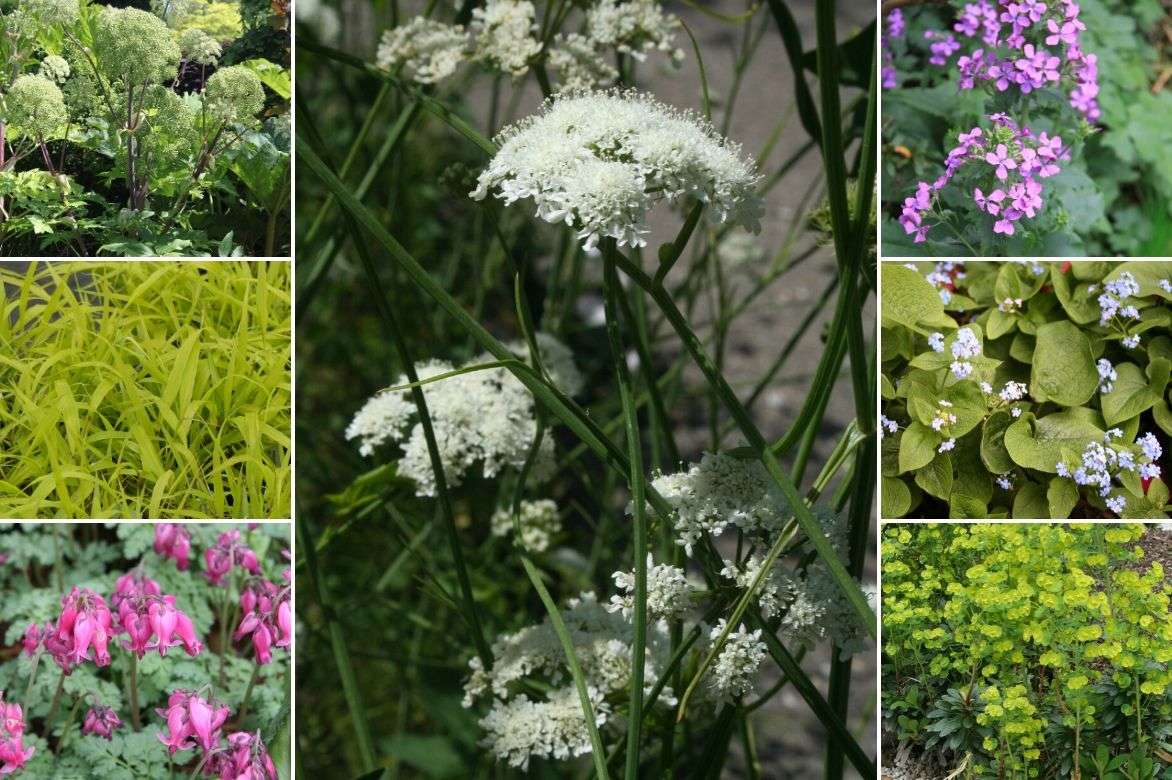
An example of a combination in cool partial shade: Sweet cicely, Angelica, Golden millet, Bleeding heart ‘King of Hearts’, Money Plant, Caucasian forget-me-not and Woodland spurge
Useful resources
- Discover the most beautiful collection of herb seeds to season your seasonal dishes!
- The finest selection of 15 medicinal plants with numerous benefits… to grow in your garden is with us!
- It’s easy to succeed in the sowing of aromatic plants by following our tips!
- Discover our potager chervils!
- Diseases and parasites of chervil: identification and treatment
- Subscribe!
- Contents
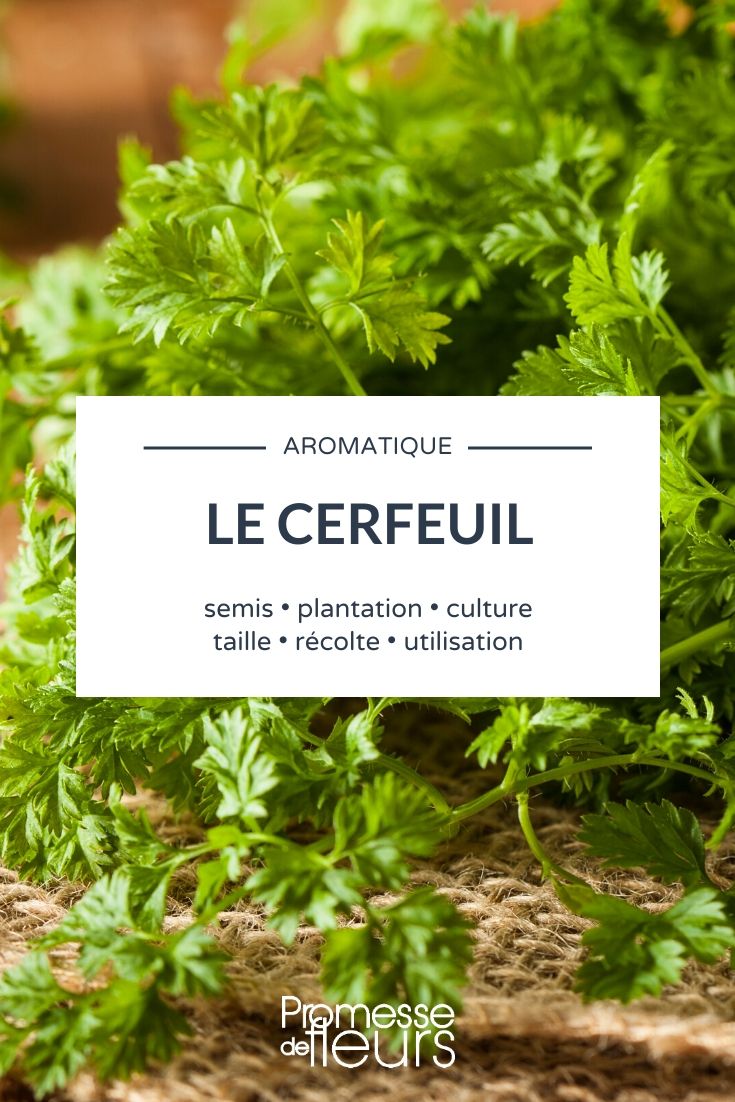


































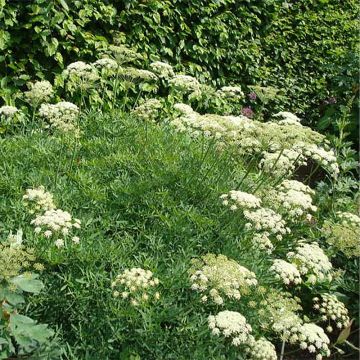
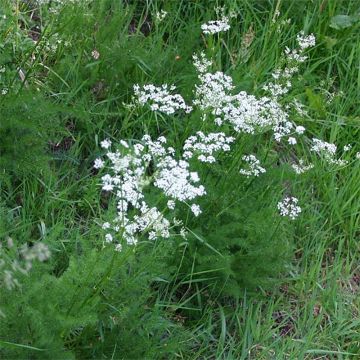
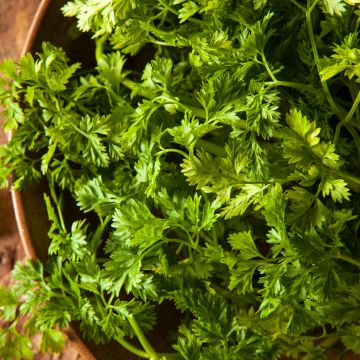

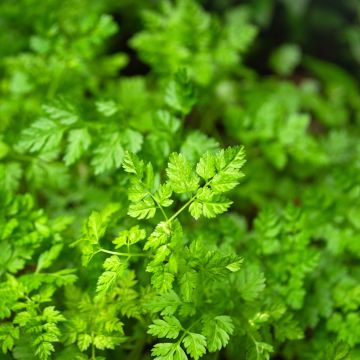
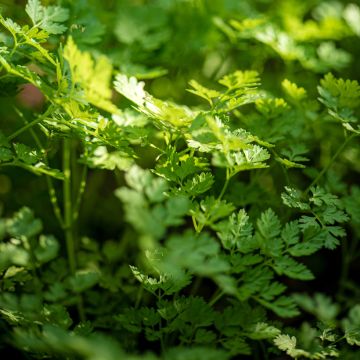
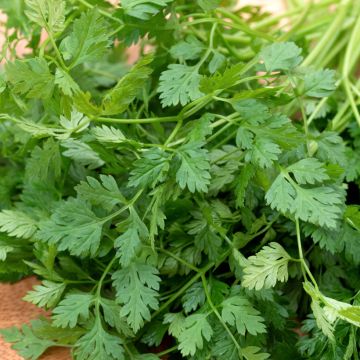
Comments